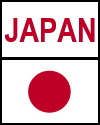East Asia is a vast and geographically diverse region encompassing China, Japan, the Korean Peninsula (North and South Korea), Mongolia, Taiwan, Tibet, and the special administrative regions of Hong Kong and Macau. Dominated by China, the area features dramatic landscapes, from the towering Himalayas in Tibet to the expansive Gobi Desert in Mongolia.
China, the largest country, spans deserts (Taklamakan), fertile river basins (Yangtze, Yellow River), and mountain ranges (Himalayas, Kunlun). Tibet, an autonomous region, sits on the high-altitude Tibetan Plateau, often called the "Roof of the World." Hong Kong and Macau, coastal city-states, are densely populated financial hubs with limited land. Taiwan, an island
off China's coast, has lush forests and a mountainous interior.
Japan and the Koreas are more compact but geographically varied. Japan is an archipelago with volcanic peaks (Mount Fuji), dense forests, and limited arable land. The Korean Peninsula is mountainous, with North Korea more isolated and rugged, while South Korea has fertile plains and urbanized coasts.
Mongolia, landlocked and sparsely populated, consists of vast steppes and deserts. Overall, East Asia's geography shapes its climate, economies, and cultures—from nomadic herding in Mongolia to high-tech industries in Japan and coastal megacities like Shanghai and Hong Kong.
|


















